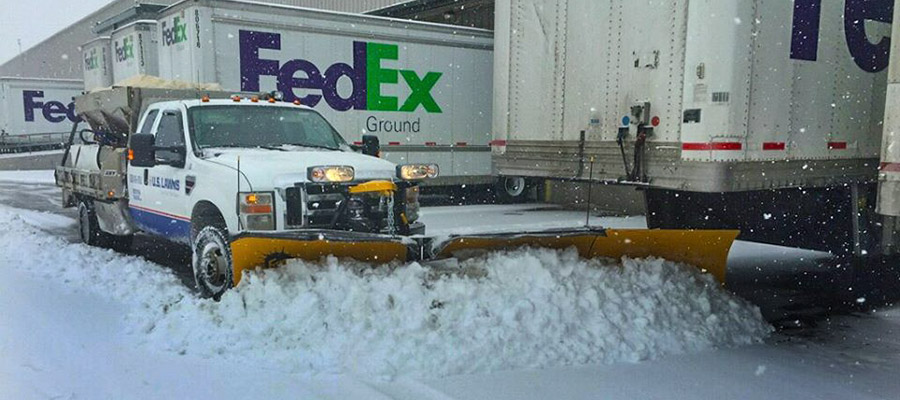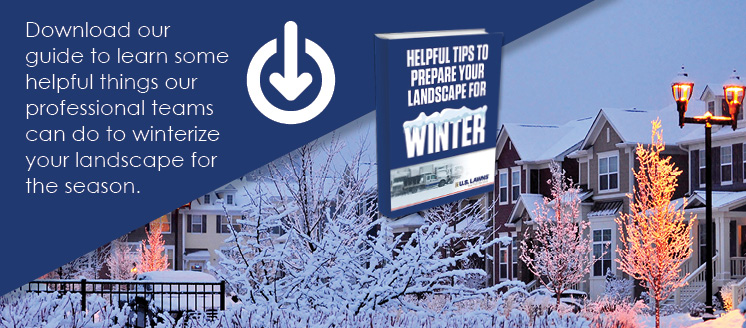Right now is the time to start preparing for winter.
Chris Seaborne and Tim Harrell, owners of U.S. Lawns – Team 008 of Frederick Maryland, know first-hand the importance of starting off the winter season prepared, and it all begins now.
In a recent conversation with Seaborne, he explained that while preparation of equipment and materials usually takes place a little later, the middle of June–beginning of July is when you should start the customer side of things.
Snow an Ice Management Contracts need to be renewed.
This is the season when snow and ice management contracts are up, so you should be sending out renewals. It’s also an opportune time to start talking to people about snow sales during the calm after the spring landscaping frenzy.
It’s also good to catch them before they go on vacation or take a summer break, so they can have plenty of time to review the new contract. They probably won’t sign it in June or July, but as Chris said, “At least they’ve got it, so then when August-September rolls around it’s a quick ‘Hey, I’ve got to review the contract. I’ll get it signed and back to you,’ versus ‘Oh, send me all the information, we need to take this out to bid.’ You don’t want your current customers to take it out to bid in September or October, you want to nip that in the bud and take it out to bid now.”
Take the right approach.
So, how do you approach them? According to Seaborne, it’s pretty straightforward with current customers, because you’re always on their sites or talking with them about landscaping. This ongoing dialogue makes it easy to broach the subject with a simple “Hey by the way, your snow management contract was up at the end of March, we need to get something in place for this winter.”
New customers are more of a challenge. You don’t know when they start their process for snow and ice management, so that conversation only takes place when they have a need. They’re not likely to be calling this time of the year to discuss snow management unless their contract is expired or they’re unhappy with their current vendor. This means pursuing new winter contracts requires making sales calls and utilizing the Direct Sales Dial Up program offered by U.S. Lawns’ Home Office.
Snow management is all about logistics.
It’s important to understand that since snow management is all about logistics, you need a lot of time and information to prepare properly. We’re talking about big equipment, multiple job sites, and multiple subcontractors and employees here.
To quote Chris, “It’s different than landscaping. If you were to go bid Disney World and all of a sudden you picked up the contract and had to start mowing their grass next month, do you think you could pull that off? That’s what we’re looking at, maybe not to that scale, but a lot of the jobs that we bid require five or ten or fifteen people to be there when it snows. I can’t just make that happen in five minutes. So, I want to get that ball rolling now so I know what equipment I’ve got available when a new customer calls me and wants to do something in September or October.”
Subcontractors are key.
This brings us to the matter of subcontractors. If you’re thinking of getting serious about winter services, a big decision is whether to invest in your own staff and equipment, or hire subcontractors.
Seaborne made a great case for hiring subcontractors as he expanded on the subject with: “Last winter we serviced about 130 commercial properties, the smallest being a bank, the largest being a sixty-five acre distribution center. We subbed out sixty-five pieces of heavy equipment, combined. If I had to buy those, what would I do with them the rest of the year? So, I have to use subcontractors because it makes more sense; I can’t do that many jobs without them.”
He continued with some very sage advice, “Just make sure your subcontractor agreement specifies company and customer expectations. That includes codes of conduct, training, reporting procedures, and responsibility for repair of any damage to client properties. Remember, at the end of the day they are your face on your customers’ sites.”
Now, subcontractors may be the ones working on the job sites, but U.S. Lawns of Frederick manages all the logistics, which is very complex. They have to map out where all their clients are located in relation to the subcontractors to make sure they’re operating at peak efficiency; they also have to look at every single property and determine what equipment is needed on each. With that many clients, it’s a huge undertaking.
It’s a 24/7 job, and you’ve got to be responsive.
The final thing to consider is the commitment involved. It’s critical to be highly responsive, and you’ve got really know every customer’s business to be successful. As Chris said, “You have to intimately know each facility that you’re doing, what their operation is like and what effects their operations. It’s not a nine to five job.”
Ultimately, it all comes down to getting behind your customers’ eyes, constant communication, early preparation, and total commitment. And it’s precisely these qualities that make Chris Seaborne and Tim Harrell legendary winter warriors in the U.S. Lawns Network.


